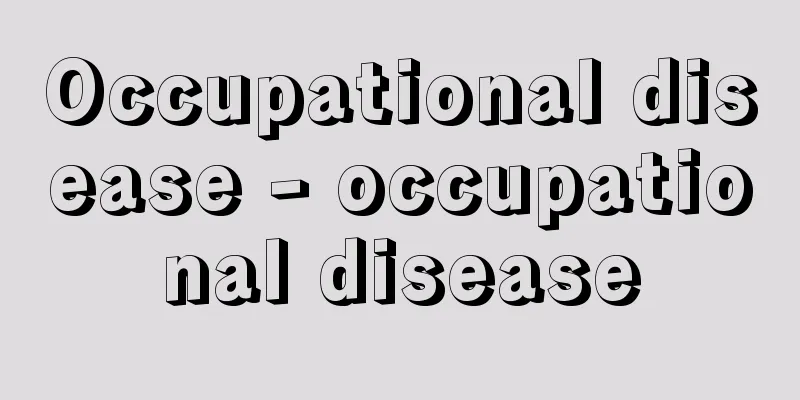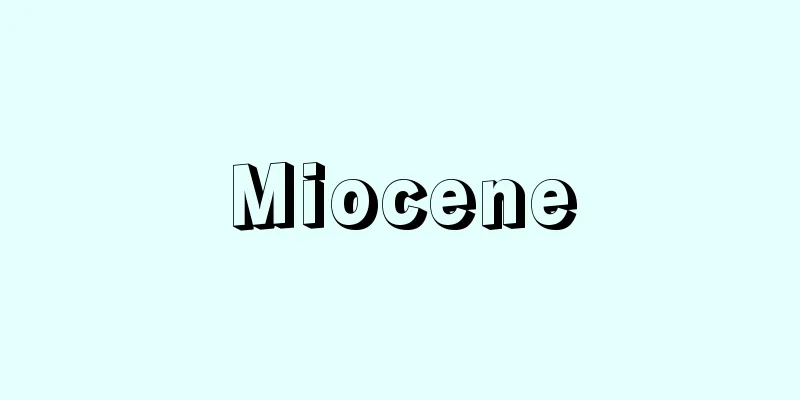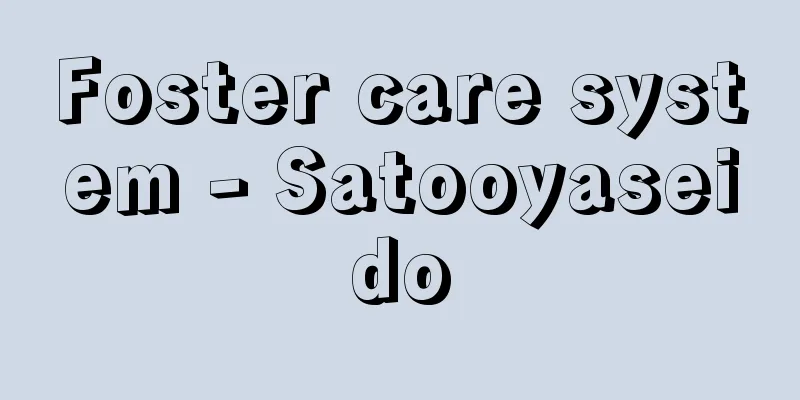Occupational disease - occupational disease

|
If a disease is caused by a person's occupation, it is called an occupational disease. Therefore, in order for a disease to be determined to be an occupational disease, it must be proven that there is a causal relationship between the disease and the occupation that the person is engaged in or has engaged in. To prove this, it is necessary to investigate in detail the type of occupation, length of service, working conditions and methods, the work environment, and the patient's symptoms. There is also a type of occupational disease that is often confused with occupational disease. In this case, when a worker is injured or falls ill while working, the employer pays the expenses required for necessary medical treatment and the wages of the worker who is absent from work and is undergoing medical treatment, according to Articles 75, 76, and 77 of the Labor Standards Act. In other words, occupational disease is a legal term that refers to illness or injury that requires compensation, and is not the same as an occupational disease. Furthermore, due to improvements in harmful working environments and working conditions, and the widespread automation of work due to advances in industrial technology, occupational diseases caused by a single work-related factor have decreased. Instead, there has been an increase in multifactorial chronic diseases that develop when work-related factors, such as long working hours and work requiring one to maintain a fixed posture for long periods of time, are combined with non-work-related factors, such as the individual worker's genetic predisposition, dietary habits, and lifestyle. These are called work-related diseases. [Sadayoshi Shigeta] historySome occupational diseases were already known from around the 4th century BC, with Hippocrates describing lead poisoning and Aristotle describing carbon monoxide poisoning. In the 16th century, the German mining doctor G. Agricola described silicosis in miners in his De Re Metallica , but the most famous book on occupational diseases is Morbis Artificum Diatriba (Diseases of Workers) by B. Ramazzini (1633-1714). This book describes in detail the causes, treatments, and prevention methods for as many as 53 occupational diseases of the time. The Industrial Revolution, which began in the mid-18th century, spread rapidly throughout Europe and dramatically increased production, but behind the scenes, poor working conditions caused many illnesses among workers, and in 1802, the first occupational health law was enacted in England. In the 20th century, the First World War led to the development of chemical and heavy industries, which resulted in an increase in occupational diseases caused by dust and other hazardous chemicals, high temperatures, and the handling of heavy objects. This led to growing social concern, and countries began to establish preventive laws and establish research institutes for occupational diseases. After the Second World War, new occupational diseases arose against the backdrop of technological innovation and rapid industrialization, particularly the rise of the petrochemical industry and the spread of mass production methods, and ways of solving the problems on an international scale were sought. In Japan before the Meiji period, silicosis and lead poisoning were only known to a certain extent, but the development of modern industry after the Meiji period forced many tragic sacrifices on workers. Particularly important was the spread of pulmonary tuberculosis among factory workers, which Ishihara Osamu pointed out in 1913 (Taisho 2) in his book "The Current State of Factory Girls as Seen from Hygienics." Meanwhile, there was an increase in unusual occupational diseases such as bone necrosis of the jaw caused by the yellow phosphorus match industry and carbon disulfide poisoning in the rayon (artificial silk) and staple fiber (staple fiber) industries, which developed rapidly in the early Showa period. In this context, the private Kurashiki Institute of Labor Science was established in 1921, and for the first time, serious investigations and research into occupational diseases were carried out. However, as the war expanded from the Second Sino-Japanese War to World War II, occupational diseases and other issues related to workers' health were completely overshadowed. It was after World War II that issues such as workers' health began to attract renewed attention. After the Ministry of Labor (now the Ministry of Health, Labor and Welfare) was established in 1947 and the Labor Standards Act and the Workmen's Accident Compensation Insurance Act were promulgated and put into effect, social awareness of occupational diseases finally began to deepen. [Sadayoshi Shigeta] CauseThere are three main causes of occupational diseases: (1) When the amount of work is too great or the working conditions are inappropriate, such as the intensity of work, work density, working posture, working speed, or working time. Types and preventionThe occurrence patterns of occupational diseases change with the development of industry and changes in production technology. In order to prevent occupational diseases, the following measures must be comprehensively promoted: (1) Work environment management: Improving facilities and changing work methods to ensure adequate ventilation, lighting, and heat conditions, and to prevent the effects of harmful physical conditions such as noise, vibration, harmful radiation, and ionizing radiation. In places where there is a risk of harmful substances being released, changes to production processes and work methods, the use of alternative raw materials, suppression of emissions, sealing or isolating facilities, and installation of local exhaust ventilation systems. Also, measuring the concentration of harmful substances in the environment to monitor whether the concentration is harmful to health. (2) Work method management: Mechanization of work, changes to equipment layout and work processes, improvements to machines, workbenches and chairs, etc., with ergonomic considerations in mind in order to reduce the physical and mental burden of the work as much as possible. (3) Work system management: Setting work hours and rest periods according to the work environment and work intensity, limiting or eliminating overtime, rationalizing shift work, etc. (4) Appropriate Placement: Considering the physical ability, knowledge, skills, personality, etc. of workers, assigning them to the workplace that best suits them, with special consideration given to women, minors, the elderly, the physically disabled, and the infirm. (5) Safety and health education: This education must be provided to workers engaged in hazardous work at the time of employment and whenever the work content is changed. (6) Medical Examinations and Subsequent Measures In addition to those prescribed by law, medical examinations deemed necessary by a doctor shall be conducted and, based on the results of those examinations, health guidance shall be given and instructions given regarding changes in workplace assignments and working hours. (7) Occupational Health and Safety Equipment: In order to protect workers from harmful environments, protective equipment must be worn in any workplace requiring it. [Sadayoshi Shigeta] Occupational Disease LegislationThe Labor Standards Act stipulates minimum standards for working conditions such as working hours and holidays. The Industrial Safety and Health Act was enacted to ensure the safety and health of workers in the workplace and promote the creation of a comfortable working environment, clarifying the employer's responsibility for safety and health management and establishing standards for the organization and activities of safety and health management in the workplace. The Pneumoconiosis Act stipulates health examinations for workers engaged in dusty work and subsequent measures based on the results, particularly transfer, medical treatment, and compensation for seriously ill workers. The Working Environment Measurement Act, based on the provisions of Article 65 of the Industrial Safety and Health Act (measurement of working environment), establishes a system of working environment measurement experts and working environment measurement organizations to ensure a proper working environment, and stipulates that environmental measurements in certain hazardous workplaces should be carried out by qualified individuals. [Sadayoshi Shigeta] "National Health Trends," compiled and published by the Health and Welfare Statistics Association, annual editions [References] | | | |Source: Shogakukan Encyclopedia Nipponica About Encyclopedia Nipponica Information | Legend |
|
ある病気が、職業に原因があっておこった場合に、その病気を職業病という。したがって、ある病気が職業病と決められるためには、その病気と、その人が従事している、あるいは従事していた職業との間に因果関係のあることが証明されなければならない。証明するためには、職業の内容、勤続年数、作業条件や作業方法、作業現場の環境、患者の症状を詳しく調べる必要がある。なお、職業病とよく混同するものに業務上疾患がある。これは、労働者が業務上で負傷したり病気になった場合に、「労働基準法」第75条・76条・77条などによって、必要な療養に要する費用や、休業し療養中の労働者に対する賃金の支払いを使用者が行うものである。すなわち、業務上疾患とは補償を必要とする疾病や負傷をいう法律用語であり、職業病と同一ではない。 また、有害な労働環境および労働条件の改善や、産業技術の進歩に伴う作業の自動化が普及したことなどにより、かつてのような単一の労働要因に起因して発症する職業病は減少した。かわって、長時間労働や、長時間一定姿勢を保持しなければならない作業などの労働要因に、作業者個人の遺伝素因や食習慣、生活習慣などの非労働要因が加わって発症する、多要因性の慢性疾患が増加してきた。これを作業関連疾患とよんでいる。 [重田定義] 歴史ある種の職業病は、すでに紀元前4世紀ごろより知られており、ヒポクラテスHippocratesは鉛中毒に関して、アリストテレスAristotelēsは一酸化炭素中毒についてそれぞれ記述している。16世紀に入ると、ドイツの鉱山医師アグリコラG. Agricolaは、『デ・レ・メタリカ』De Re Metallicaのなかで鉱山労働者の珪肺(けいはい)について記載しているが、職業病の著書としてもっとも有名なのは、ラマッツィーニB. Ramazzini(1633―1714)の『労働者の病気』Morbis Artificum Diatribaである。本書には53にも上る当時の職業病について、その原因、治療法、予防法などが詳しく記載されている。18世紀なかばに始まった産業革命は、またたくまに全ヨーロッパに広まり、生産を著しく上昇させたが、その裏では劣悪な労働環境や労働条件の下で、労働者の疾病が多発し、1802年になると、イギリスで最初の労働衛生に関する法規が制定された。 20世紀に入ると、第一次世界大戦を機として化学工業、重工業が発達し、そのために粉塵(ふんじん)その他の有害化学物質、高温環境や重量物取扱いなどによる職業病が増加し、社会的にも関心が高まり、各国では予防のための法規の制定や職業病の研究機関の設立が進められた。第二次世界大戦以降には、技術革新と工業化の急速な進展、とくに石油化学工業の勃興(ぼっこう)や量産方式の普及などを背景として新しい職業病がおこり、国際的な規模での問題解決の道が探られている。 明治以前の日本では珪肺や鉛中毒について知られている程度であったが、明治以降の近代産業の発達は労働者に多くの悲惨な犠牲を強いることとなった。とくに重要なのは工場労働者の肺結核の蔓延(まんえん)であり、石原修(おさむ)は1913年(大正2)この問題を『衛生学上ヨリ見タル女工之現況』で指摘している。一方、黄リンマッチ工業による顎骨壊疽(がくこつえそ)や、昭和初期に急速に発達した人絹(じんけん)(人工絹糸、レーヨン)・スフ(ステープルファイバー)工業でみられた二硫化炭素中毒などの特殊な職業病も増加した。こうした事情を背景に、1921年になると私立の倉敷労働科学研究所が設立され、初めて本格的に職業病の調査と研究が進められるようになった。しかしながら、その後、日中戦争から第二次世界大戦へと戦争が拡大したことによって、職業病など労働者の保健に関する問題はまったく影を潜めてしまった。労働者の保健等の問題が新たに注目されるようになったのは、第二次世界大戦後である。1947年(昭和22)に労働省(現厚生労働省)が設置され、「労働基準法」と「労働者災害補償保険法」が公布、施行されてから、ようやくにして職業病に対する社会的認識が深まってきた。 [重田定義] 発生要因職業病をおこすおもな原因には次の三つがあげられる。 (1)作業強度、作業密度、作業姿勢、作業速度、作業時間など、作業量が大きすぎるか、作業条件が適当でないためにおこる場合 種類と予防産業の発達、生産技術の変革により職業病の発生形態も変わるが、職業病を予防するには、以下の対策を総合的に推進しなければならない。 (1)作業環境管理 適当な換気、採光、照明、温熱条件が得られるよう、また騒音、振動、有害輻射(ふくしゃ)線、電離放射線などの有害物理条件の影響を防ぐための設備の改善、作業方法の変更。有害物質の発散するおそれのあるところでは、生産工程や作業方法の変更、原材料の代替使用、発散の抑制、設備の密閉または隔離、局所排気装置の設置。また、環境中の有害物の濃度を測定して、健康に障害を及ぼす濃度か否かを監視するなど。 (2)作業方法管理 作業の肉体的・精神的負担をできるだけ軽減するよう人間工学的配慮の下に、作業の機械化、装置のレイアウトや作業工程の変更、機械、作業台、椅子(いす)の改善など。 (3)勤務制管理 作業環境や作業強度に応じた作業時間、休憩時間の設定、残業の制限・廃止、交替勤務の合理化など。 (4)適正配置 労働者の身体能力、知識、技術、性格などを考慮して、適性のある職場へ配置する。とくに女子、年少者、高年者、身体障害者、虚弱者などに対する配慮など。 (5)安全衛生教育 雇い入れ時、作業内容の変更時には、有害業務に従事する労働者に対してかならず行う。 (6)健康診断と事後措置 法規によって定められたもののほか、医師が必要と認めた健康診断を実施し、その結果に基づいて保健指導、職場配置や勤務時間の変更を指示する。 (7)労働衛生保護具 有害環境から労働者を守るために、保護具を必要とする作業場ではかならず着用させる。 [重田定義] 職業病に関する法規「労働基準法」は、労働時間、休日など勤労条件の最低基準を定めたものである。「労働安全衛生法」は、職場における労働者の安全と健康を確保するとともに、快適な作業環境の形成を促進する目的で制定され、安全衛生管理に対する事業主の責任を明確にし、また事業場の安全衛生管理の組織と活動の基準を定めている。「じん肺法」は、粉塵作業に従事する労働者の塵肺に関する健康診断とその結果に基づく事後措置、とくに重症者の配置転換、療養、補償などを規定している。「作業環境測定法」は、「労働安全衛生法」第65条の規定(作業環境の測定)を受けて、適正な作業環境確保のために、作業環境測定士、作業環境測定機関の制度を設け、一定の有害作業場における環境測定は有資格者に行わせるべきことなどを定めている。 [重田定義] 『財団法人厚生統計協会編・刊『国民衛生の動向』各年版』 [参照項目] | | | |出典 小学館 日本大百科全書(ニッポニカ)日本大百科全書(ニッポニカ)について 情報 | 凡例 |
>>: Politics as a profession - Politik als Beruf German
Recommend
Travel agency - Ryokougyou (English spelling) travel agent
A business that acts as an intermediary between tr...
Menstrual abnormalities -
What kind of disease is it? <Pay attention if ...
Berson, A. (English spelling) BersonA
…In 1909, he became director of the Potsdam Magne...
Russell, CM
… [Engraving] In the early period, wooden portrai...
Okey - Okey
...Zanuck, who was a Republican but also a close ...
Jeong Gwang-jo (English spelling) Zhèng Guāng zǔ
A Chinese dramatist of the Yuan dynasty. His birth...
Carpeaux - Jean-Baptiste Carpeaux
French sculptor. Born in Valenciennes. He went to...
Gelidium amansii (English name) Gelidiumamansii
…It is a seaweed of the red algae family Gelidiac...
Sanada Yukimura
A military commander from the Azuchi-Momoyama peri...
Locomotive Workers' Union - Kikansharoudoukumiai
...In June 1989, the official name was changed to...
Mantou (bun) - Mantou
Chinese steamed buns. They are considered a staple...
Acute lymphoblastic leukemia
Definition/Concept Acute lymphocytic leukemia is a...
Photographic sensitivity
It is sometimes called photosensitivity or simply ...
Hagfish - Nutaunagi (English spelling) hag fish
A general term for fish in the Myxinidae family, ...
Thaleia
…In Latin, they are called Gratiae, and in Englis...









